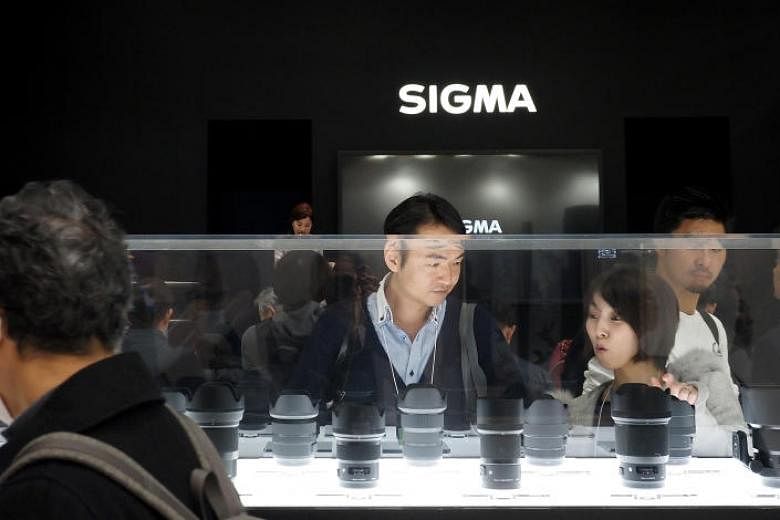Making lenses for mirrorless cameras has been both a bright spot and a challenge for Sigma, the world's largest third-party lens manufacturer.
Mirrorless cameras are interchangeable-lens cameras (ILCs) that do not have the reflex mirror found in digital single-lens reflex (DSLR) cameras, thereby allowing them to be more compact and lighter. They form the only ILC segment that is enjoying a healthy growth rate.
In an interview at the CP+ 2019 camera show in Yokohama, Japan, last week, Sigma chief executive Kazuto Yamaki says the rising mirrorless camera genre is an opportunity as more mirrorless camera systems meana greater variety of products. This will help stimulate the camera market and Sigma can sell more lenses.
But it is also a challenge for Sigma as a manufacturer as it has to open up new assembly lines to build lenses for different mounts.
"We will lose efficiency and productions costs will increase," he says.
This is especially so now that Sigma is part of the L-mount alliance with Panasonic and Leica, which allows Sigma to make cameras and lenses for Leica's L-mount system for mirrorless cameras.
Sigma has one factory in Aizu, Japan. It has expanded the factory by about 30 per cent since 2016 to meet changing demands.
The company has announced it will be releasing 11 L-mount lenses this year.
But Mr Yamaki says Sigma's yet-to-be-named L-mount mirrorless camera - which will have a Foveon full-frame 60.9-megapixel image sensor - will be delayed till next year, instead of this year as previously announced.
Sigma was founded in 1961 by the late Michihiro Yamaki, the father of Mr Kazuto Yamaki. The privately held company makes lenses for consumers to use with cameras of other brands.
The global market share of mirrorless cameras in terms of value has grown by 15 per cent from 2016 to last year, while that of DSLR cameras fell by 22 per cent over the same period, according to market research firm GfK Asia.
Mr Yamaki says he saw the mirrorless camera uptrend about two years ago and initiated several mirrorless camera lens projects then. Now, Sigma is reaping the rewards.
He is happy with its performance last year, which saw overall sales value grow by 5 per cent compared with the previous year. In particular, the company's lenses for Sony E-mount mirrorless cameras "sold very well".
However, Mr Yamaki is conservative when making his prediction for 2019. "I think it will probably be flat," he says.
And Sigma is not abandoning DSLR camera lenses. "As long as there is a demand, we will make them for users," he says.


